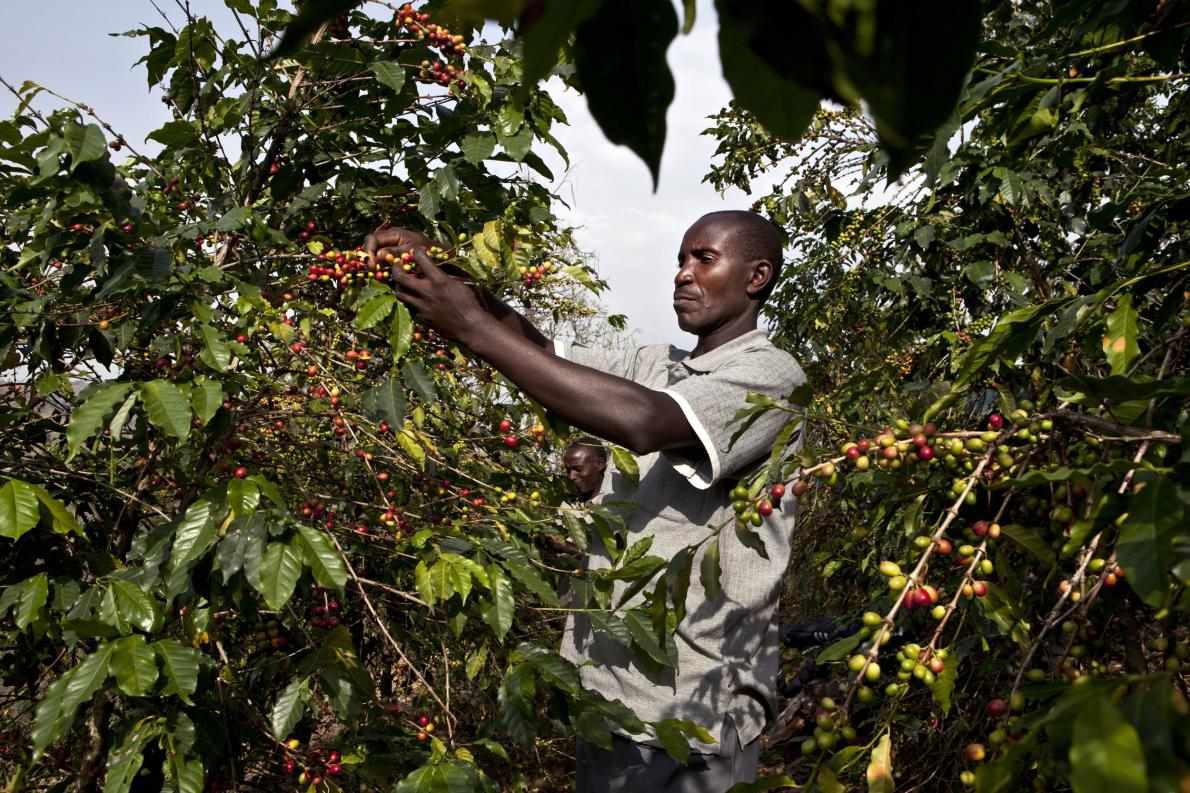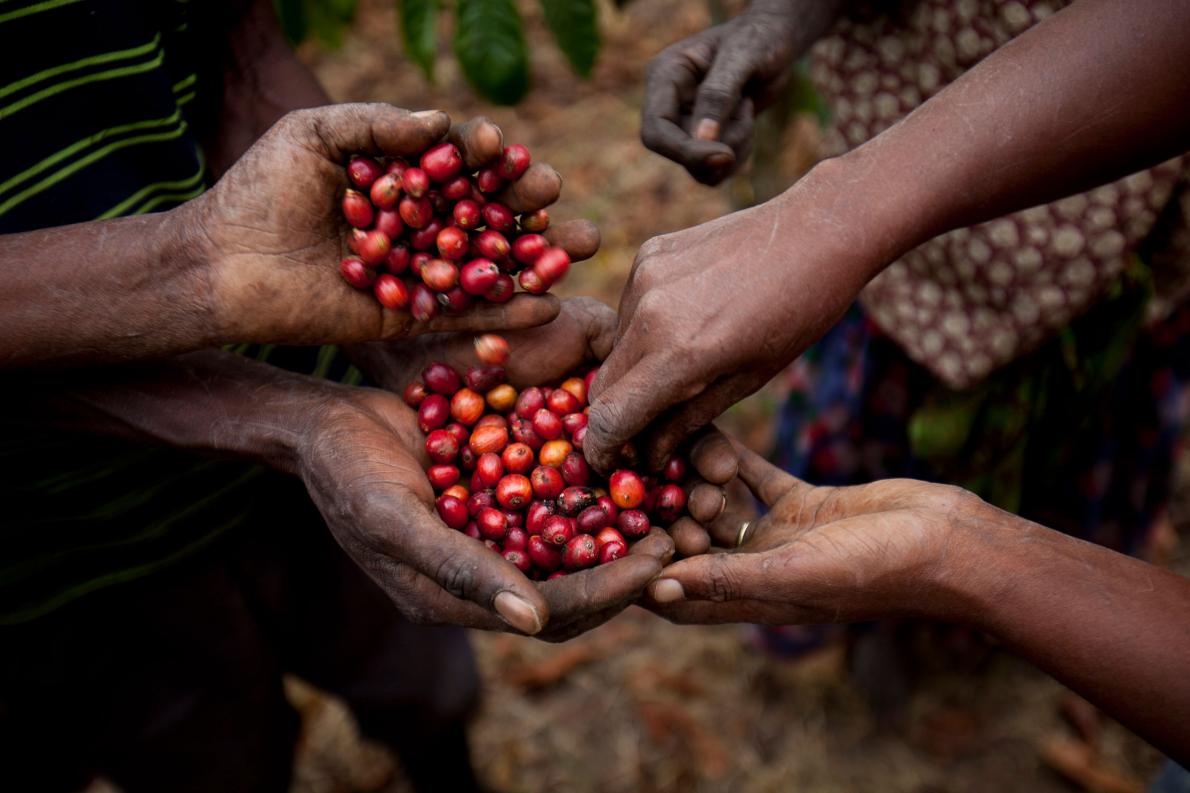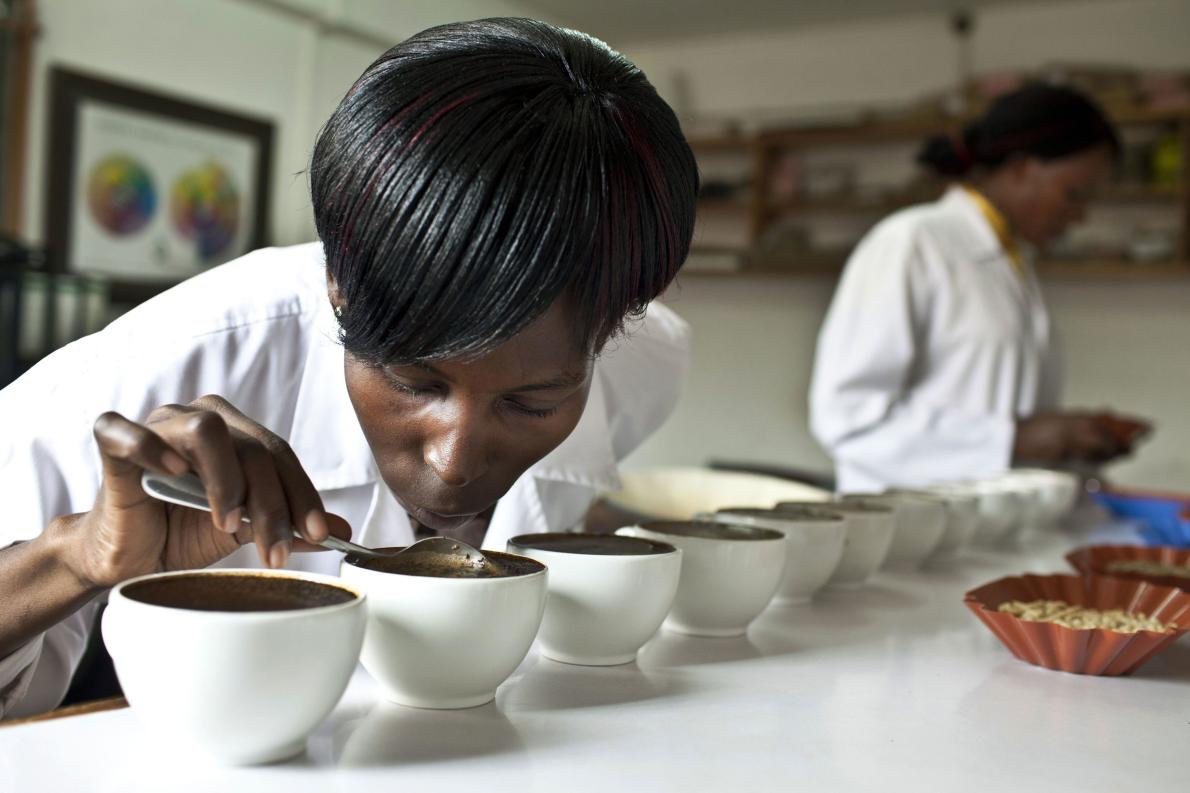The story of coffee producing areas | where will the small coffee farmers in Uganda go when the coffee crisis is coming?
For professional baristas, please follow the coffee workshop (Wechat official account cafe_style)
Uganda is pinning its hopes on the most valuable crops but must overcome the obstacles to climate change.

Coffee farmers in Kasese, Uganda, harvest ripe coffee cherries. PHOTOGRAPH BY JONATHAN TORGOVNIK, GETTY IMAGES
── Sam Massa, Uganda Live, does not drink coffee. Like many Ugandans, he prefers seasoned tea with milk. And like many Ugandans, he said: "We are part of coffee, and coffee is in our blood." "
Massa lives on the top of an extinct volcano that straddles the border between Uganda and Kenya, and the mud-brick hut in the middle of the coffee grove is his home. Some of the trees here were planted by his great-grandfather over a hundred years ago. Massa's ancestors were coffee farmers like him, and almost all of his annual income came from coffee beans, which ended up as coffee drunk by people in the United States and other distant countries.
This place is one of the oldest and most respected coffee producing areas in East Africa. The air is fresh and cool, and the hillside can be seen everywhere with continuous scenery and sparkling waterfalls. But the mountain is about to get into trouble. In fact, the trouble has come to Massa's door.
Uganda has always had two rainy seasons, from March to May and from October to December. Small farms in East Africa, like those in Massa, are almost irrigated, that is, crops, including coffee, are grown entirely on rainfall. But in the second rainy season of 2016, there was little rain in Massa's area, and when the coffee was harvested in January 2017, the harvest was very poor. This is not an accidental anomaly. "the weather has been abnormal in the past few years," he said. "
"rainfall patterns have completely changed in the past 20 years," he said. "it rains when you don't expect it. When it should rain, it is sunshine or drought. "
As a result, the Massa family are living a hard life. If you don't have three meals, you usually eat your own bananas. Medicine is a rare luxury. There is no way to buy the tools and fertilizers needed for the upcoming planting season. What bothers Massa most is that for his five children, he can only afford four of them to go to school, and his eldest son is a junior high school student, but he stays at home.
In addition to the coffee tree, Massa once had another important asset: a healthy cow, raised in the barn next to the house, which could provide precious fresh milk. However, after the poor coffee harvest, Massa had to sell the cow in order to pay for his son's tuition.
"I really couldn't help it at that time," he said. "I hope God will give me another cow. "

Fresh coffee berries harvested in western Uganda. This country is the second largest coffee producer in Africa after Ethiopia and the largest robastian coffee grower on the continent. PHOTOGRAPH BY TREVOR SNAPP, BLOOMBERG VIA GETTY IMAGES
Coffee and climate
Massa's story may be familiar to many coffee farmers in Uganda and around the world. Coffee is very vulnerable to climate change. According to the newly published global survey of coffee research, rising temperatures and unstable rainfall have increased the diseases and insect pests of coffee trees and reduced the quantity and quality of coffee beans. Overall, the world's coffee production area may be reduced by 50% due to climate pressures by 2050, the survey found. This will deal a severe blow to the global supply of coffee, which is already struggling to catch up with demand. A paper published in the journal Nature in June 2017 makes a similar forecast for Ethiopia, fully highlighting the situation in East Africa.
For coffee addicts in the United States and Europe, these shocks are likely to cost a little more money for coffee. But for the world's 25 million coffee farmers, most of whom are small farmers like Massa, the consequences will be much more frightening.
Uganda is particularly vulnerable because coffee is the economic foundation of the country. Now scientists, government officials, farmers and entrepreneurs, from the top of Mount Mount Elgon to downtown Kampala, to remote areas still plagued by rebel leader Joseph Joseph Kony, are finding ways to save the coffee industry from climate change.
Written by: Tim McDonnell
Important Notice :
前街咖啡 FrontStreet Coffee has moved to new addredd:
FrontStreet Coffee Address: 315,Donghua East Road,GuangZhou
Tel:020 38364473
- Prev

Story of Coffee producing area | how can Ugandan coffee farmers save themselves in the face of many difficulties
For professional baristas, please follow the coffee workshop (Wechat official account cafe_style) Uganda ranks eighth in the world in coffee production, on a par with Peru and second in Africa after Ethiopia. Each year, Uganda usually produces 3 million to 4 million bags of 60 kg coffee, accounting for only 2-3% of global production, far less than Brazil (55 million bags) or Vietnam
- Next

Have a cup of iced coffee. Introduction to Japanese coffee culture.
For professional baristas, please follow the coffee workshop (official Wechat account cafe_style) if you want to drink coffee in Japan, you can go to convenience stores, "Blue Bottle Coffee" and other third-wave coffee shops and tea shops. Iced coffee is a unique Japanese drink. This article will introduce the unique coffee culture of Japan. Blue Bottle Coffee marched into Japan. Summary of Japanese Coffee
Related
- How did the Salvadoran coffee industry develop in Central America?
- What exactly does the golden cup extraction of coffee mean?
- The Origin of Coffee flower
- [2023 Starbucks World Earth Day] there are more meaningful things besides free Starbucks coffee!
- What kind of coffee is there in Spain? 9 Flavors of Spanish Coffee
- Aromatic African coffee| Kenya's coffee culture and historical production area
- Liberica Coffee Bean knowledge: the characteristics of Liberian Coffee beans of the three original species of Coffee beans
- The origin and formula of Spanish latte introduces the taste characteristics of Bombon coffee in Valencia, Spain.
- How to adjust the solution of over-extracted coffee
- What is the tasting period of coffee beans? What is the period of coffee and beans? How should coffee wake up and raise beans?

